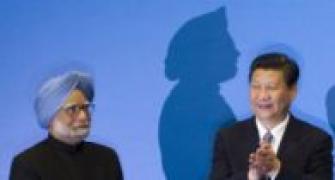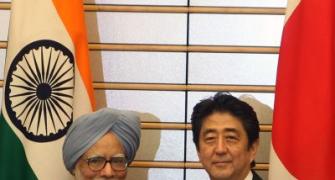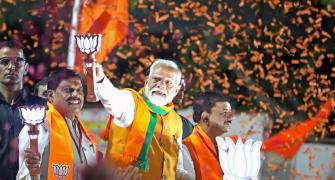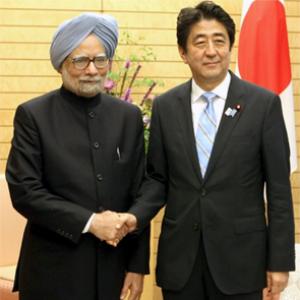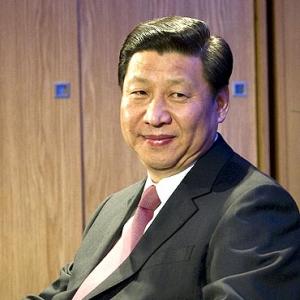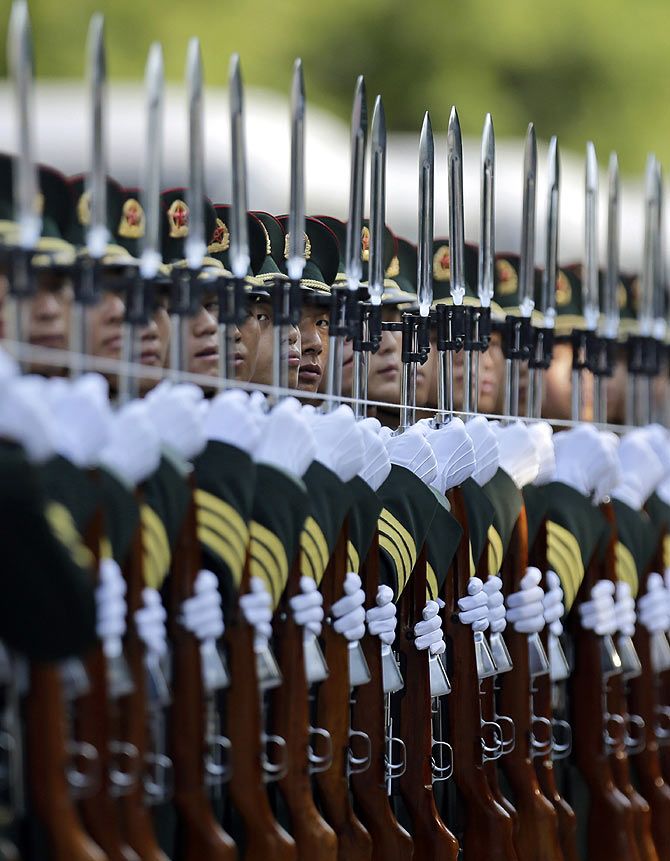 'After more than 20 years of understanding, nothing much seems to have been achieved. What the two countries have been trying to do is to manage the recurrence of border incursions. The two sides must address the disease, and not the symptom of the disease,' says Rup Narayan Das.
'After more than 20 years of understanding, nothing much seems to have been achieved. What the two countries have been trying to do is to manage the recurrence of border incursions. The two sides must address the disease, and not the symptom of the disease,' says Rup Narayan Das.
The 17th round of Special Representative talks between India's National Security Advisor Shivshankar Menon and his Chinese counterpart Yang Jiechi took place in New Delhi this week. Earlier, Yang was China's foreign minister, and as such he is familiar with the complexities of India-China relations, including the boundary dispute between the two countries.
Yang was elevated to the position of State Councilor after the leadership transition. In China's pecking order, the position of State Councilor is higher than that of minister. On numerous occasions Menon has closely interacted with Yang, and both presumably have a fairly good understanding of each other and have established a good chemistry.
Earlier, Yang participated in the 16th round of border talks in Beijing in June last year. Yang succeeded Dai Bingguo, who retired in March 2013 after holding the position of China's special representative to the boundary talks since 2003, when the new nomenclature was institutionalised. After the leadership transition in China, Yang is the only continuing link with India.
The latest round of talks is taking place after the border incursion by People's Liberation Army troops on April 15 in Depsang Bulge that inflicted a serious jolt to the relationship between the two countries, which impelled New Delhi to assert that 'peace and tranquility' are critical to the relationship between the two countries.
For long, it has been a stated position of the two governments that pending the settlement of the boundary dispute, the two countries must continue and carry forward relationship in all aspects of bilateral relationship between the two countries, including trade and economic engagement.
The approach of the current Chinese leadership to India-China boundary dispute can be gauged from the views expressed by President Xi Jinping in an interview to an Indian news agency in March last year.
Elucidating his five-point formula, he had said that the resolution of the boundary dispute between the two sides 'won't be easy', and pending its final settlement 'peace and tranquility' should be maintained on the border without affecting overall ties.
Ironically within less than a month of this platitude, the border incursion to the Indian side of the Line of Actual Control by PLA soldiers occurred.
While the progress on the border dispute is moving at a snail's pace, the failure on part of the two sides to resolve the alignment of the LAC is the major cause of the border incursion. The efficacy of the confidence building measures and mechanisms are greatly constrained due to the non-resolution of the LAC.
A major breakthrough in the relationship between the two countries was the signing of the joint working group mechanism between the two countries during the visit of then prime minister Rajiv Gandhi to China in 1988. The progressive and unorthodox outlook of Rajiv Gandhi and pragmatism of the paramount leader Deng Xiaoping created the perfect chemistry between the two leaders. Rajiv Gandhi, didn't live long to pursue the relationship to greater heights.
Consequently, the mettle fell on yet another dynamic prime minister P V Narasimha Rao, who gave a twist to India's foreign policy with the 'Look East' policy in 1991, which incidentally coincided with the disintegration of the erstwhile USSR the same year. The year also marked the end of the Cold War. This geo-political development impacted Sino-Indian relations as well.
It was against this geo-political backdrop that Narasimha Rao visited China in 1993 and signed the historic agreement on peace and tranquility on the Line of Actual Control. The agreement in the first place asserted that the India-China boundary question shall be resolved through peaceful and friendly consultations, and that neither side shall use or threaten to use force against the other by any means.
To reinforce the point, it further said that 'pending an ultimate solution to the boundary question between the two countries, the two sides shall strictly respect and observe the LAC between the two sides'.
As the LAC is not delineated and demarcated in case of inadvertent border crossing in the LAC, it further stipulated that in the event personnel of one side cross the LAC, upon being cautioned by the other side, they should immediately pull back to their own side of the line. It added, when necessary, the two sides shall jointly check and determine the segments of the LAC where they have different views as to the alignment.
The agreement also stressed on the 'resolution of differences between the two sides on the alignment of the Line of Actual Control'.
Finally, the agreement said 'the two sides agree that references to the Line of Actual Control in this agreement do not prejudice their respective positions on the boundary question.'
Three years later, the agreement on CBMs in the military fields in the LAC signed between the two countries during the visit of then Chinese president Jiang Zemin to India in November 1996, reiterating the earlier position that said the two sides agree to speed up the process of clarification and confirmation of the Line of Actual Control.
It further said that as an initial step in this process, the two sides were clarifying the alignment of the LAC in those segments, where they have different perceptions.
As per this agreement, the two countries also agreed to exchange maps indicating their respective perceptions of the entire alignment of the LAC as soon as possible.
The joint declaration signed between the two sides during then prime minister Atal Bihari Vajpayee's visit to China in 2003 reiterated their commitment for the clarification of the LAC.
The protocol on CBMs in the military field in the LAC entered into by the two countries in 2005 again emphasised that early clarification and confirmation of alignment of the LAC for peace and tranquility on the India-China border.
Further, the agreement on political parameters signed in the same year categorically said that 'an early settlement of the boundary question will advance the basic interests of the two countries and therefore should be pursued as a strategic objective.'
It is regrettable that almost after more than 20 years of this common understanding, nothing much seems to have been achieved. Instead what the two countries have been trying to do is to manage the recurrence of border incursions. The two sides must address the disease, and not the symptom of the disease.
The resolution of the ambiguity on the LAC will not only facilitate the settlement of the boundary dispute inevitably, but also help the CBMs work well.
It is high time that the two countries achieved something concrete rather than the hackneyed reiteration of pious platitude, which is fast running out of steam.
Rup Narayan Das is a Senior Fellow at the Institute for Defence Studies and Analyses.

